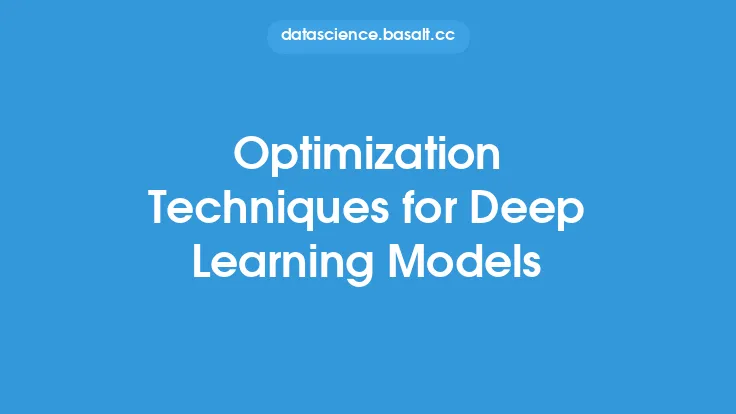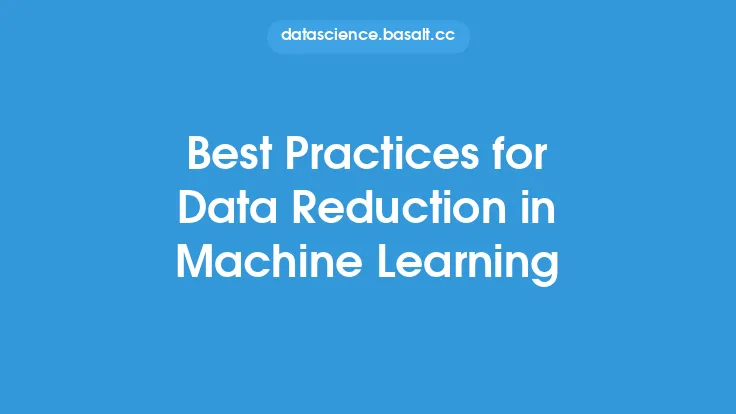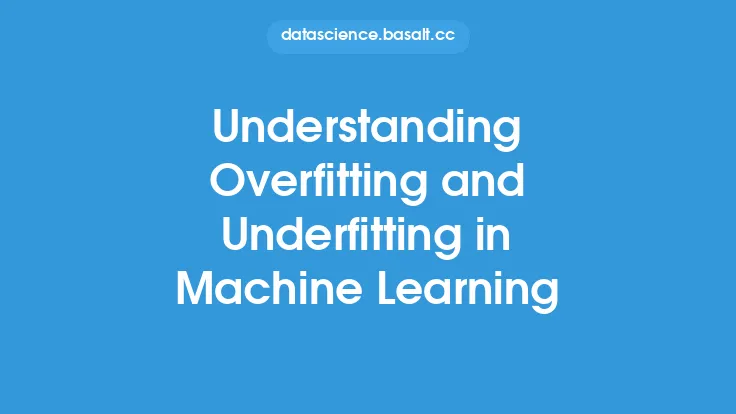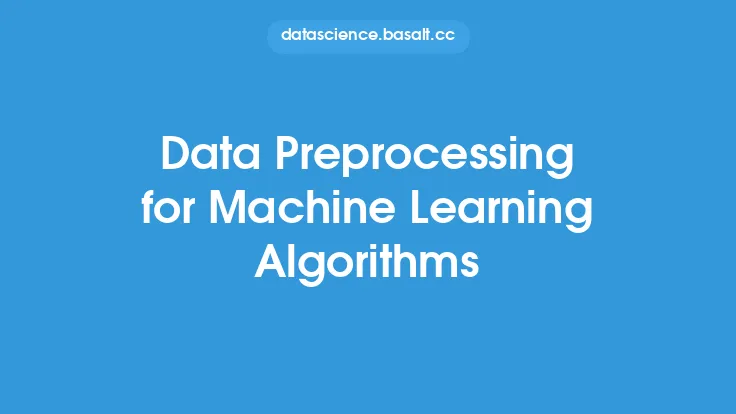Deep learning models have achieved state-of-the-art performance in various tasks, including image classification, natural language processing, and speech recognition. However, one of the major challenges in training deep learning models is overfitting, which occurs when a model is too complex and learns the noise in the training data, resulting in poor performance on unseen data. To prevent overfitting, various regularization methods have been developed, which can be applied to deep learning models to improve their generalization performance.
Introduction to Overfitting
Overfitting is a common problem in deep learning, where a model becomes too specialized to the training data and fails to generalize well to new, unseen data. This can happen when a model is too complex, has too many parameters, or is trained for too long. Overfitting can be identified by monitoring the model's performance on the training and validation sets. If the model's performance on the training set is significantly better than its performance on the validation set, it is likely that the model is overfitting.
Types of Regularization Methods
There are several types of regularization methods that can be used to prevent overfitting in deep learning models. These include:
- L1 Regularization: Also known as Lasso regularization, this method adds a term to the loss function that is proportional to the absolute value of the model's weights. This term encourages the model to reduce the magnitude of its weights, which can help to prevent overfitting.
- L2 Regularization: Also known as Ridge regularization, this method adds a term to the loss function that is proportional to the square of the model's weights. This term encourages the model to reduce the magnitude of its weights, which can help to prevent overfitting.
- Dropout Regularization: This method randomly sets a fraction of the model's neurons to zero during training, which can help to prevent overfitting by reducing the model's capacity.
- Early Stopping: This method stops training when the model's performance on the validation set starts to degrade, which can help to prevent overfitting by preventing the model from learning the noise in the training data.
How Regularization Methods Work
Regularization methods work by adding a penalty term to the loss function that encourages the model to reduce its capacity. This can be done by reducing the magnitude of the model's weights, or by randomly setting a fraction of the model's neurons to zero. By reducing the model's capacity, regularization methods can help to prevent overfitting and improve the model's generalization performance.
Implementing Regularization Methods
Regularization methods can be implemented in deep learning models using various techniques. For example, L1 and L2 regularization can be implemented by adding a term to the loss function that is proportional to the absolute value or square of the model's weights. Dropout regularization can be implemented by randomly setting a fraction of the model's neurons to zero during training. Early stopping can be implemented by monitoring the model's performance on the validation set and stopping training when the performance starts to degrade.
Choosing the Right Regularization Method
The choice of regularization method depends on the specific problem and model architecture. For example, L1 regularization is often used for models with a large number of parameters, while L2 regularization is often used for models with a small number of parameters. Dropout regularization is often used for models with a large number of layers, while early stopping is often used for models that are prone to overfitting.
Hyperparameter Tuning
Hyperparameter tuning is an important step in implementing regularization methods. The hyperparameters of the regularization method, such as the strength of the regularization term or the fraction of neurons to drop, need to be tuned to achieve the best results. This can be done using various techniques, such as grid search or random search.
Regularization Methods for Specific Deep Learning Architectures
Different deep learning architectures require different regularization methods. For example, convolutional neural networks (CNNs) often require dropout regularization, while recurrent neural networks (RNNs) often require L1 or L2 regularization. Autoencoders often require dropout regularization, while generative adversarial networks (GANs) often require L1 or L2 regularization.
Conclusion
Regularization methods are an essential tool for preventing overfitting in deep learning models. By adding a penalty term to the loss function or randomly setting a fraction of the model's neurons to zero, regularization methods can help to reduce the model's capacity and improve its generalization performance. The choice of regularization method depends on the specific problem and model architecture, and hyperparameter tuning is an important step in implementing regularization methods. By using regularization methods, deep learning models can achieve state-of-the-art performance on a wide range of tasks, from image classification to natural language processing.





